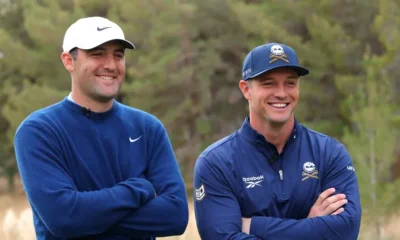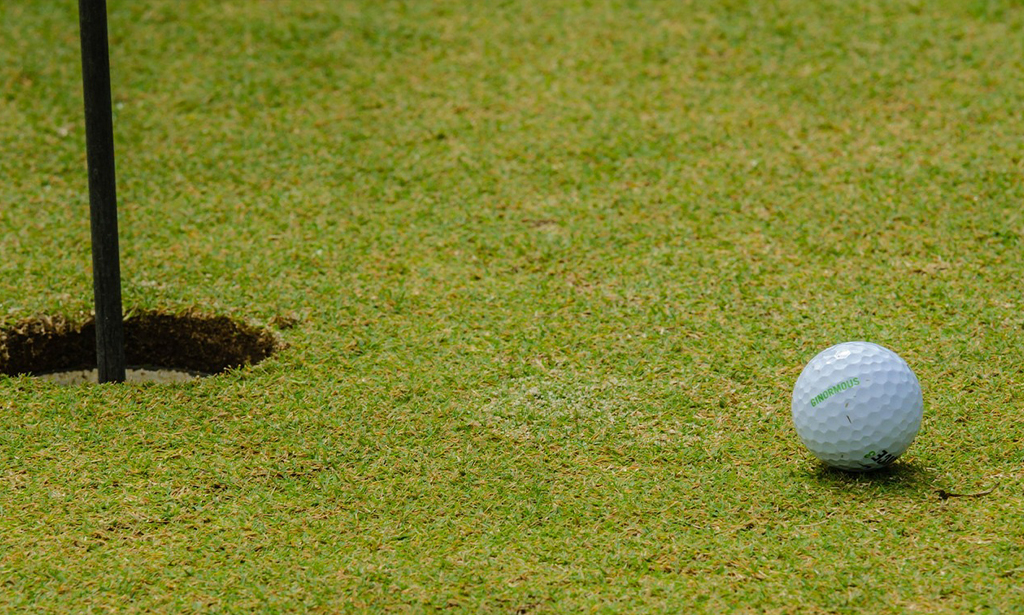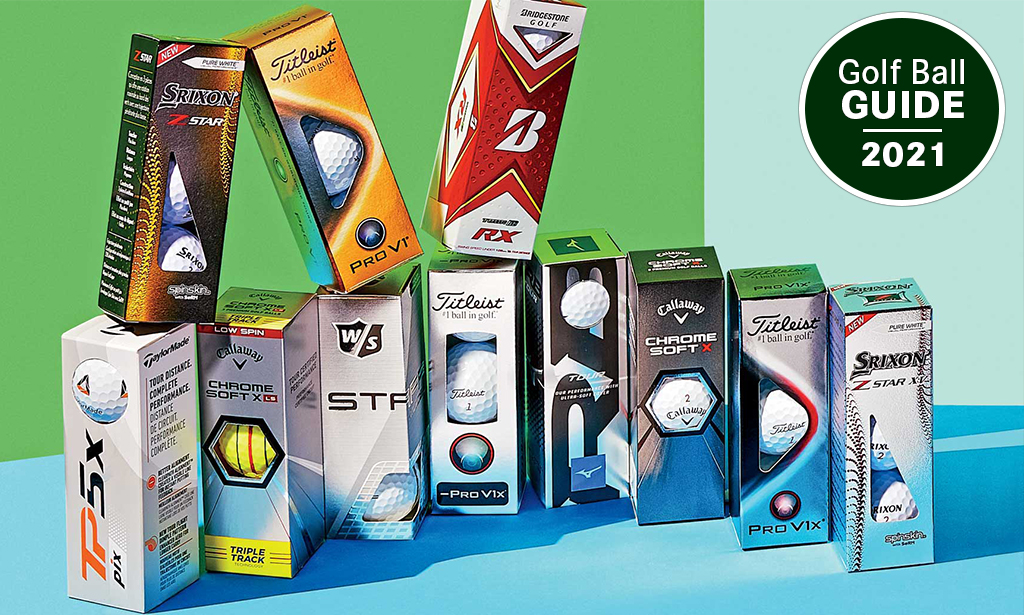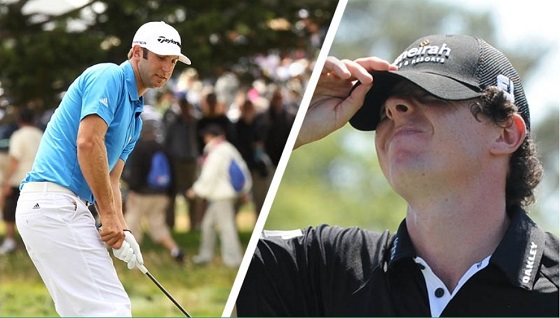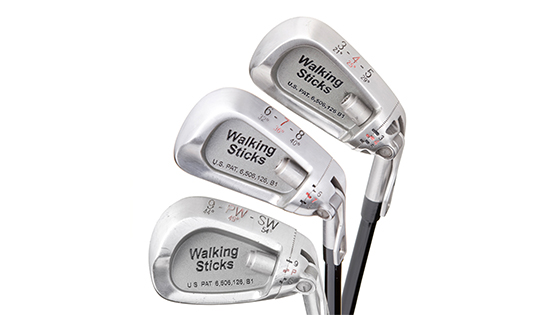Blog
Weekly Breakdown: Rory’s contentious decision, Torrey Pines props, and shaky putting

Welcome back to the Weekly Breakdown, where we’re wondering if Tom Brady is getting out now to give himself a few years to get ready for the Champions Tour… Let’s get to it!
FIRST GROUP OFF
Torrey Pines.
There is a contingent of diehard golf fans who have a notably complex relationship with Torrey Pines. There are a handful of gripes with varying levels of legitimacy, which include the following: It’s boring. It doesn’t take advantage of its surroundings. Narrow fairways and long rough are meh. The greens are bumpy. There are a bunch of forgettable holes that generally just blend into each other. The pond on 18 is silly and makes zero sense in the context of the rest of the course. And then there’s the big one: Given the breathtaking cliffside property, it should be so much better.
I’m not saying those arguments are without merit. At last summer’s U.S. Open I even found myself thinking that a major championship should be held at a course that was less familiar and more exciting. But this week, in the PGA Tour’s third trip to Torrey Pines in 12 months, I found myself fully enjoying the viewing. What gives? A number of factors. Here are a few nice things I’d like to say about this week’s Tour site:
There is no course that has benefitted more from the widespread use of drone shots than Torrey Pines, which can look drab and scrubby from ground level but magnificent with proper perspective. It’s fun to have a PGA Tour course where bogeys lurk around every corner. Showcasing one of the greatest municipal golf complexes in the world on a yearly basis is a good thing for golf. There are a few holes in particular — 3, 4, 12 and 18 come first to mind — that make for terrific entertainment. The leaderboard is always bunched with solid ballstrikers coming down the back nine in the final round. And we’re deeply familiar with the finishing stretch, with memories dating back to Tiger Woods at Buick Opens, various national championships, crowning moments for Jason Day and Jon Rahm and more. That intimate knowledge of fairways, green complexes, drama, pitfalls — it all makes for better viewing. Maybe it’s Stockholm Syndrome. Maybe it’s the fact that all you need for a good Tour event is a close finish on a hard, familiar course. Whatever it is, the Farmers Insurance Open was fun.
WINNERS
Who won the week?
Viktor Hovland’s jinx
This week’s golf was chock-full of nail-biting finishes but the hottest finish came from Viktor Hovland, who seemed out of contention beginning the day six shots back and seemed further out of contention when he bogeyed No. 15 but then finished birdie-eagle-birdie to plant a flag in the clubhouse at 12 under and then deliver a top-notch jinx to his biggest threat:
“There’s some drama, there’s some water, but I mean, Rory [McIlroy] is a pretty good player, so I’m thinking he’s going to close this one off,” Hovland said as he waited. The rest is history — and more on that later.
Looks like Hovland got Rory with the mega-jinx: pic.twitter.com/D2Zw5y9D6L— Dylan Dethier (@dylan_dethier) January 30, 2022
A reporter asked Hovland if the finish was the best of his career, and he gave a curious qualifier in his answer.
“Under the circumstances, yes, for sure,” he said. What did that mean? Hovland clarified:
“I do distinctly remember a little match that I had in college. We used to do a little Ryder Cup — me and Kristoffer Ventura against Zach Bauchou and Sam Stevens. We were basically playing for dinner and it was kind of getting dark, like this, and it was pretty feisty. We all didn’t want to lose and I remember we were doing stroke-play best-ball, I think, and we were down I think three strokes with three to go, and I finished birdie, birdie, and then eagle on the last to beat them by a shot and they were so mad, and it just brought me so much joy. So I do remember that one.”
The reporter pointed out that this win — worth more than $1.3 million — was more lucrative than a dinner bet.
“It is. But the other one was pretty satisfying, too.” No wonder people like this guy.
Lydia Ko’s latest chapter
It remains hard to fathom, but Lydia Ko — winner of this week’s Gainbridge LPGA — is still just 24. That’s difficult to comprehend because she became world No. 1 at just 17, which means she has already played a lengthy professional career, but it’s also hard because that career has had so many chapters. Early success. Then some struggles. Caddie changes, coaching changes, team changes. And now, with 17 wins under her belt, Ko has validated her comeback tour and cemented herself among the top pros in the world. Since the beginning of 2021, Ko has made 24 starts, missing just one cut while logging 16 top-10s, nine top-threes and three victories. She’s solidly at No. 3 in the world behind the dueling duo of Jin Young Ko (back at No. 1 after this wee
Lydia Ko became a 17x LPGA Tour winner with a final round 69 at the @GainbridgeLPGA ?
Watch her highlights from Sunday in Boca! ? pic.twitter.com/20R0DlkX7l— LPGA (@LPGA) January 31, 2022
On Sunday, Ko held off Danielle Kang with a clutch up-and-down from a greenside bunker at No. 18. Post-round she reminded everyone that you can’t try to be a past version of yourself; neither life nor golf works that way. And she summed up her feelings succinctly:
“Three words: Excited, cocktail, sleep,” she said. “I’m a little — I could do with sleep right now, thank you. I had a cocktail. That’s why I said cocktail. I feel like my cheeks are getting red, too.”
Well earned.
Luke List’s horrendous layup
This sounds like a dig but it is, in fact, admiration. Luke List came to No. 18 at Torrey Pines reeling; he’d just missed a four-footer at No. 17 to fall a shot off the lead. Then he missed left with his tee shot, forcing a layup so that he could get it close to the front-left funnel pin. But then he committed the cardinal sin of Torrey Pines: He layed up into the rough.
But then we saw the benefit of List being a terrific ball-striker and a very strong human being. Even from the rough he was able to generate enough spin that his ball landed softly on the front of the green and settled some 13 feet from the hole. He matched speed with line perfectly, making birdie to force a playoff. And in that playoff, he hit an even better layup from a worse lie (plugged in the right fairway bunker) and followed that with an even better approach shot, which he spun back to inside a foot. That made him a winner. And it was pretty clear just how much that win meant:
Follow along behind the scenes with Luke List after securing his first victory on TOUR @FarmersInsOpen ? pic.twitter.com/zdxKYjpmVZ— PGA TOUR (@PGATOUR) January 31, 2022
ALMOST-WINNERS
So close, and yet…
Danielle Kang’s tunnel vision
Coming off a win at the Tournament of Champions, Danielle Kang nearly made it two in a row — but her birdie try at No. 18 just wiggled past. Kang and Ko dueled their way down the stretch but Kang credited her charge in part to staying in her own lane.
“I wasn’t necessarily paying attention to a lot of what [Ko] was doing, to be honest, because I didn’t even know on 12 she had to hit a provisional because I got up to the fairway and there was four golf balls and I said, What happened here?”
Richard Bland, Ageless Wonder
If it’s possible for a playoff loss to feel like a win, how ’bout the runner-up finish for Richard Bland at the Dubai Desert Classic? As a quick recap: He’s turning 49 next week, he’s up to No. 53 in the world, Viktor Hovland needed 73 holes to beat him and, given the strength of the field, the finish registers as his best-ever result in terms of World Ranking points.
Will Zalatoris (and yes, his putter too)
The wobbly putting stroke of Will Zalatoris was front and center this weekend, largely on the basis of one sketchy missed shortie and two missed putts on 18 (one in regulation, one in the playoff). Let’s attempt something challenging: Let’s try to hold two thoughts in our head at the same time. Will Zalatoris’ putting woes might be real and might also be overstated.
Viewer discretion is advised. https://t.co/gTFPPhUDBv— No Laying Up (@NoLayingUp) January 28, 2022
Tee to green, Zalatoris was the best golfer in the field, gaining an extremely impressive 12.5 strokes. On the greens, he was a troubling 64th of the 79 players who made the cut, and he made nothing on Saturday, taking 29 putts on the 15 greens he hit in regulation. He actually made very little on Saturday, too, when he hit it so well he shot seven-under 65 despite losing ground on the greens. That basically never happens.
So the putting isn’t great. No doubt about that. It wasn’t great either, when Zalatoris finished the season No. 122 on Tour in putting, which is below average but well ahead of other notables like Hideki Matsuyama (who won the Masters) and Collin Morikawa (who won the Open Championship and conquered the world).
But let’s remember what Brandel Chamblee said a couple weeks ago in reference to Matsuyama:
“It’s not about who putts the best. It’s about who putts best, amongst the best ball strikers. And when [Hideki] does that he always has a decent chance.”
Zalatoris was a couple of inches from winning last week. If he keeps hitting the ball like this, he’ll have a whole bunch more chances.
So, so close.
Will Zalatoris and Luke List are headed for a playoff. pic.twitter.com/Ah9XeXd0DY— GOLFonCBS (@GOLFonCBS) January 30, 2022
Jason Day’s chase for No. 1
Even as he has dropped steadily in the world rankings, Jason Day has continued to talk about the goal of returning to World No. 1. I’ve admired his ability to think big, given he entered this week at World No. 129. But his game was solid through the bag, he turned in a vintage putting performance and contended until the end, finishing one shot outside the playoff and posting his first top-three finish since 2018.
Jon Rahm’s grip on World No. 1
All last week, Jon Rahm looked, uhh, unsatisfied with his game.
Jon Rahm just beat the tee box so hard he broke out the ball mark repair tool! pic.twitter.com/tY0hIE4IR3— Dylan Dethier (@dylan_dethier) January 27, 2022
He still had a putt on the 72nd hole to get into a playoff. I’m starting to think he’s pretty good.
NOT-WINNERS
Maybe next week?
Not laying up
Rory McIlroy seemed destined for victory when he stepped to the 17th tee on Sunday tied for the lead with a drivable par-4 and reachable par-5 in front of him. But a messy tee shot on 17 left him scrambling for par and then he laid back with 3-wood off the tee on 18, forcing a difficult decision: From 267 yards, should he pull 3-wood and go for the green? Or should he lay up, try to wedge it close and, if he made par, get into a playoff?
After the fact, the wise golf minds of the internet seemed unanimously incredulous that McIlroy went for it (and dumped it way short, at least 10 yards shy of clearing the water). I actually think his decision to go for it was reasonable, at least at the outset. If he clears the water, he’s very likely making birdie and leaving with the win. If he lays up, birdie is in play, but it’s far less likely — plus par means a three-man playoff and bogey is still in play, too, given McIlroy’s occasional misadventures with a wedge. Plus, McIlroy still had that same wedge shot to get up-and-down for par and force a playoff, so the back-door win was still available.
Instead, I’d say the mistake was in the execution as much as it was the decision to go for it. Perhaps there was mud on the ball that affected its flight. Perhaps he and caddie Harry Diamond misjudged the wind. Either way, you just can’t hit the high, slicey soft one there. He did, and it cost him the tournament.
Justin Thomas’ weekend
On Friday, we seemed destined for a Jon Rahm-Justin Thomas duel in the final round. But that never quite materialized. Yes, Rahm stayed in the hunt, but Thomas disappeared in a peculiar way, making seven bogeys against just three birdies in his final 27 holes to finish T20. It’s tough to pinpoint one issue in particular, because Thomas hit some loose tee shots in the third round while his short game seemed the main culprit on Saturday, losing three shots to the field around and on the greens. Thomas’ weekend isn’t cause for worry — he entered the week with five top-six finishes in his last seven starts — but it does feel like a missed opportunity.
Bleach-blond Brooks
I’m a big fan of Brooks Koepka’s new hair color and his general willingness to do something people will make fun of him for doing. But I think if you go hard on the bleach-blond hair you have to make the cut, right?!
Brooks Koepka looks like he ate Will Zalatoris pic.twitter.com/p92yxKMdSk— Dylan Dethier (@dylan_dethier) January 27, 2022
Koepka went all Marshall Mathers before Wednesday’s opening round, but come Friday he shot 74 in his second round to miss the weekend by three. The good news for Koepka: He had plenty of company! Bryson DeChambeau, Jordan Spieth, Tony Finau, Rickie Fowler and Phil Mickelson were among the list of big names to miss the weekend.
This article originally appeared on Golf.com
Blog
Sustainability in Golf: The Future of Eco-Friendly Greens
Read about the environmental impact of golf courses.

Golf, a sport often associated with pristine, manicured greens and lush landscapes, isn’t historically perceived as eco-friendly. However, with growing concerns about climate change and sustainability, the golf industry is steadily transitioning towards more sustainable practices. This article will explore how golf courses around the world are becoming greener and more eco-friendly while maintaining their appeal to golf enthusiasts.
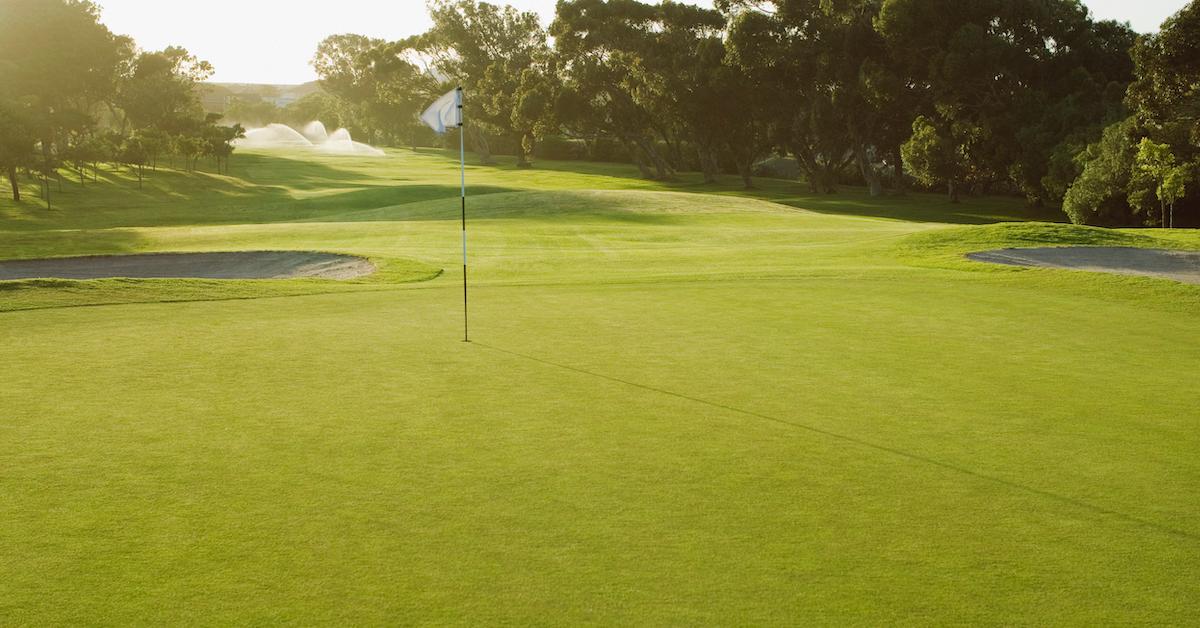
The Environmental Impact of Golf Courses
Golf courses traditionally use extensive resources, including water, pesticides, and fertilizers, which can have detrimental effects on the environment.
-
-
- Water Usage: Maintaining the verdant landscapes of a golf course requires enormous amounts of water. This is particularly concerning in regions where water scarcity is a significant issue.
- Pesticides and Fertilizers: To keep golf courses lush and free of pests, large amounts of chemicals are often used. These substances can seep into the ground, polluting water sources and harming local wildlife.
- Habitat Disruption: Golf courses often displace natural habitats, upsetting local ecosystems and reducing biodiversity.
-

Green Initiatives in Golf: Sustainability on the Fairways
Recognizing the environmental impact, many golf courses are now implementing sustainable practices to reduce their ecological footprint.

Water Conservation
Water conservation is a significant focus in eco-friendly golf course design. Methods employed include:
-
-
- Recycled Water: Many golf courses are now using recycled water or rainwater for irrigation, significantly reducing the use of freshwater resources.
- Drought-resistant Grass: Some courses are opting for drought-resistant varieties of grass that require less watering.
- Irrigation Technology: Advanced irrigation systems can efficiently distribute water, minimizing waste.
-

Reducing Chemical Usage
Reducing the use of harmful chemicals is another crucial step towards sustainability in golf. This can be achieved through:
-
-
- Organic Fertilizers and Pesticides: Many golf courses are switching to organic alternatives, which are less harmful to the environment.
- Integrated Pest Management: This approach focuses on long-term prevention of pests through biological control and habitat manipulation, reducing the need for chemical pesticides.
-

Preserving Local Habitats
Golf courses are increasingly being designed to coexist harmoniously with local ecosystems. This involves:
-
-
- Preserving Natural Features: Instead of altering the landscape to fit the course, designers are now incorporating existing natural features into the design.
- Creating Wildlife Habitats: Some golf courses are creating habitats for local wildlife, promoting biodiversity.
-
Case Studies: Sustainable Golf Courses Around the World
There are several golf courses worldwide that serve as excellent examples of sustainability in the industry.
- Pebble Beach Golf Links, USA: This renowned golf course uses recycled water for irrigation, reducing its freshwater use by 50%.
- St Andrews Links, Scotland: Known as the “Home of Golf”, St Andrews Links has implemented an extensive environmental management plan, including water conservation, habitat protection, and the use of organic fertilizers.
- Vineyard Golf Club, USA: This golf course in Massachusetts is one of the first to become fully organic, using only organic fertilizers and pesticides.
The Future of Sustainable Golf
The golf industry’s move towards sustainability is not just about eco-friendly practices on the course. It’s also about educating players and visitors about the importance of sustainability, thus promoting a culture of environmental consciousness.
While the transition to greener practices may be challenging, the benefits are immeasurable. Sustainable golf courses not only help protect the environment, but they can also enhance the playing experience, offering golfers the chance to play their favorite sport while surrounded by thriving, natural landscapes.
In conclusion, as awareness of environmental issues continues to grow, the question of “how green can the greens get?” is being answered by golf courses worldwide. Through innovative practices and a commitment to sustainability, the future of golf looks set to be greener than ever. As players, supporters, and enthusiasts of the sport, we can all contribute to this positive change by supporting golf courses that prioritize sustainability and by advocating for green practices within the golfing community.
Blog
The Golfer’s Holiday Hint-Dropping Guide
Your spouse thinks you want socks. You want a new driver. Here’s how to fix that.

Because subtlety is overrated when there’s a new driver on the line
Your spouse thinks you want socks.
Your kids think you want a tie.
Your mother-in-law is convinced you’d love another sweater with a reindeer on it, even though you’ve worn the last three exactly never, and everyone knows it, but somehow this year will be different.
It won’t be.
Here’s the problem. You want golf stuff. They don’t know what golf stuff means. You say “rangefinder” and they hear “robot finder.” You mention “premium golf balls” and they think all golf balls are the same, which is adorable but wrong, and you can’t exactly explain that without sounding like a crazy person who cares too much about dimple patterns.
So you need a strategy.
Not a subtle one either. Forget dropping hints like breadcrumbs. Drop them like anvils. We’re talking about a systematic campaign of suggestion, repetition, and strategic device-leaving that would make Madison Avenue jealous.
The Laptop Strategy (For the Tech-Savvy Golfer)
Leave your laptop open. Always. But not to just anything.
Open to golf retailer websites with items in your cart. Specific items. With the size, color, and model number clearly visible. And here’s the key – leave it open on the kitchen counter where your spouse makes coffee, because everyone looks at screens while waiting for coffee, it’s basically a law of physics at this point.
Do this for three weeks straight. Different items, same cart. They’ll get the message. And if they don’t, you’ve got a backup plan because you can just buy it yourself on December 26th when everything goes on sale.
The Casual Mention Method
This requires finesse.
Not too much though.
The goal is to work golf gifts into every conversation without seeming obsessed, which you are, but they don’t need to know that. Your daughter mentions her science project? “Speaking of projects, I’ve been thinking about upgrading my wedges.” Your son talks about his basketball shoes? “Funny you mention shoes – golf shoes with better traction would really help my game.” The mailman asks how you’re doing? “Great, though I’d be better with a new putter.”
Is this overkill? Maybe. Will it work? Absolutely.
The Magazine Massacre
Buy every golf magazine on the newsstand. Dog-ear the pages. Circle items in red pen. Write notes like “This would be perfect!” and “Honey, look at this one!” and leave them everywhere – the bathroom, the nightstand, the kitchen table, the car, their car, basically anywhere someone might sit for more than thirty seconds.
When they ask why there are seven golf magazines in the living room, just smile and say you’re “doing research.” Research for what? They won’t ask. They’re too busy looking at all those circled items with price tags helpfully highlighted.
The Strategic Screenshot
Text them screenshots. Daily.
“Look at this cool driver!” Send.
“These gloves are on sale!” Send.
“Remember when I mentioned wanting new golf shoes? These are the ones.” Send with three heart emojis because you’re not a monster, you still care about the relationship, you just also care about having the right equipment to shave three strokes off your game.
It’s called balance.
The Gift List That’s Not a Gift List
Create a shared note on your phone called “Gift Ideas” and fill it exclusively with golf items. When they ask what you want for Christmas, just say “Oh, I don’t know, I’m easy to shop for!” and then casually mention you made a little list of ideas, you know, just in case they needed inspiration, no pressure, but it’s organized by price range and includes links.
This works because you’re giving them exactly what they want – a clear shopping list – while maintaining the illusion that you’re being flexible. You’re not. But they don’t need to know that until after the presents are wrapped.
The Buddy System
Recruit your golf buddies. Have them “accidentally” call when your spouse is around. Make sure they loudly discuss the new equipment they just bought and how much it’s improved their game. Your spouse will hear. They’ll connect the dots. And if they don’t, have your buddy call again tomorrow. And the next day. Eventually, either your spouse will buy you golf stuff or they’ll buy you a different phone number, and honestly, both outcomes have their merits.
The Amazon Wish List Blitz
Create an Amazon wish list. Share it with everyone. Your spouse, your kids, your parents, your siblings, your coworkers, that guy you met at the driving range once, everyone.
Put forty items on it. Thirty-eight should be golf-related. The other two? A book and a candle, just so you seem reasonable and well-rounded, which you’re not, but again, they don’t need to know that.
Update it weekly. Add reviews in the comments like “Would really help my slice” or “These are the exact ones my pro recommended.” Make it impossible for them to buy anything else because everything else looks boring compared to golf equipment that promises to transform your game, which it might not, but the promise is what matters here.
The Direct Approach (For the Brave)
Just tell them.
Seriously.
Sit them down. Look them in the eyes. Say “I want golf stuff for Christmas. Specifically, I want this driver, these balls, and this rangefinder. Here are the links. Here are the specs. I’ve made it as easy as possible. Thank you for listening to my TED talk about my golf needs.”
Will they appreciate the honesty? Probably. Will you get what you want? More likely than if you kept hoping they’d telepathically understand that you need a new sand wedge because the grooves on your current one are worn down and it’s affecting your bunker play, which is already bad enough without equipment issues.
The Follow-Up Campaign
Don’t stop after dropping hints. Follow up. “Did you see that text I sent about the driver?” Ask during dinner. “Remember those golf shoes I mentioned?” Ask during breakfast. “Still thinking about that rangefinder.” Say it to no one in particular while watching TV.
Repetition is your friend. Marketing people know this. Politicians know this. Now you know this. Say it enough times and it stops being a hint and starts being a fact – you want golf stuff, they know you want golf stuff, and somewhere in the back of their mind, they’re starting to accept that golf stuff is happening this year.
The Backup Plan
Here’s the truth – they might still get it wrong. They might buy you golf-themed pajamas when you wanted golf balls. They might get you a gift card to a mini-golf place when you wanted a membership to a real course. They might wrap up golf socks, which are fine, but they’re not the GPS watch you’ve been talking about since July.
It’s okay. Say thank you. Mean it. Then on December 26th, hit those post-Christmas sales like a bargain hunter who knows exactly what they want and has been planning this shopping trip since Thanksgiving.
Because you have been.
And that’s fine. Golf equipment is expensive. If waiting one more day means you can get 40% off that driver you’ve been eyeing, that’s called being financially responsible. Your spouse will appreciate it. Eventually. After you explain why you needed three new wedges when you already have wedges.
“The grooves,” you’ll say.
They won’t understand.
But you’ll have new wedges.
The Real Gift
Look, here’s what matters. The holidays aren’t really about getting the perfect golf equipment, even though that would be nice, and you’ve spent considerable mental energy making sure everyone knows exactly what you want.
The holidays are about spending time with people you love. Even if they buy you reindeer sweaters. Even if they think all golf balls are the same. Even if they wrap up golf socks when you desperately need new grips for your irons.
They’re trying. That counts for something.
But also, leave your laptop open to that golf retailer website. Just in case. Because trying is good, but specific product links are better, and you didn’t make it this far in the season without having a solid Plan B.
Happy holidays. May your drives be long, your putts be true, and your gift-givers be observant enough to notice the forty-seven hints you’ve dropped since October.
And if all else fails?
There’s always next year.
Blog
Unveiling the History and Symbolism of Iconic Golf Trophies
Golf is a sport steeped in tradition, prestige, and class. From the lush greens of the course to the meticulously designed clubs, each aspect of the game exudes a sense of history and elegance.
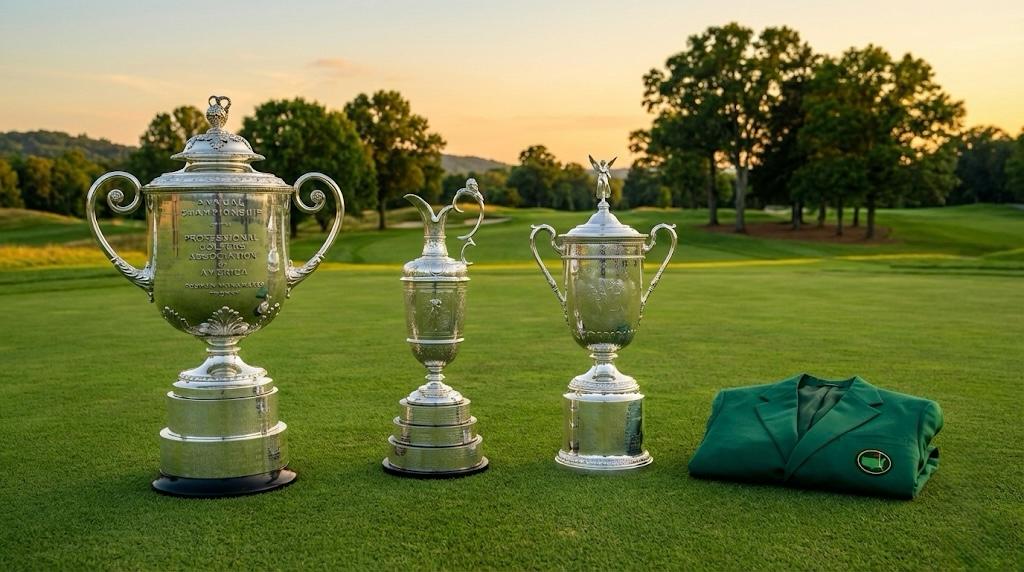
Golf is a sport steeped in tradition, prestige, and class. From the lush greens of the course to the meticulously designed clubs, each aspect of the game exudes a sense of history and elegance. Among these elements, golf trophies – the coveted prizes of the tournament – hold a special place. These iconic awards not only represent the winning golfer’s skill and determination but also carry a rich history and meaningful symbolism. In this article, we’ll delve into the story behind some of the most iconic golf trophies and what they symbolize, offering a unique perspective on this beloved sport.
The Claret Jug: The Open Championship
The Claret Jug, officially known as The Golf Champion Trophy, is awarded to the winner of The Open Championship, one of the four major championships in professional golf. The trophy, first presented in 1873, replaced the original prize of a red leather belt with silver buckle.
Its design is based on the medieval ‘claret jugs’ used to serve wine. The symbolism here lies in the association of the jug with a time-honored tradition, reflecting the essence of the tournament itself. The names of all the previous winners are inscribed on the jug, creating a tangible link to the history of the sport.
The Green Jacket: The Masters Tournament
At The Masters Tournament, one of the most prestigious events in golf, the winner is honored with a distinctive green jacket. The tradition began in 1937 when members of the Augusta National Golf Club wore green jackets to distinguish themselves from the crowd.
The symbolism of the Green Jacket is twofold. Firstly, it represents membership of an exclusive club, as only winners of The Masters or members of the Augusta National Golf Club are entitled to wear it. Secondly, the green color reflects the lush, pristine condition of the golf course, a crucial aspect of the sport.
The Wanamaker Trophy: PGA Championship
The Wanamaker Trophy, awarded to the winner of the PGA Championship, is named after Rodman Wanamaker, who played a significant role in establishing the Professional Golfers’ Association of America. It’s one of the largest trophies in professional golf, standing nearly 2.5 feet tall and weighing 27 pounds.
The size and weight of the Wanamaker Trophy symbolize the magnitude and prestige of the tournament it represents. Moreover, engraved on its silver surface are the names of past champions, honoring the legacy of the game.
The U.S. Open Trophy
The U.S. Open Trophy, awarded to the winner of the U.S. Open, dates back to 1895. The trophy was destroyed in a fire in 1946 and had to be recreated from photographs of the original.
The trophy is a sterling silver cup, adorned with elaborate ornamentation. The names of previous winners are engraved on the base, acknowledging the tournament’s rich history. The trophy represents the pinnacle of achievement in American golf, symbolizing the grit and determination required to prevail in one of the sport’s most challenging competitions.
Golf trophies are more than just symbols of individual triumph; they are embodiments of the rich history, tradition, and enduring spirit of the game. From the Claret Jug’s reflection of time-honored tradition to the Green Jacket’s symbolization of exclusivity and pristine golfing conditions, each trophy carries a unique story and meaning. These iconic awards, while coveted for their prestige, also serve as a timeless reminder of the sport’s enduring allure and the unforgettable moments that define golf history.
-

 Product Review6 years ago
Product Review6 years agoThe Perfect Practice Putting Mat Review by Jason Tenzer
-

 Blog4 years ago
Blog4 years agoLoophole Rule Offers PGA Tour Pros a Mulligan
-

 Blog4 years ago
Blog4 years ago2021 Buyer’s Guide: The Top 10 Value Golf Balls For Distance & Feel
-

 Blog5 years ago
Blog5 years agoGolf Marriage Counselor
-

 Blog6 years ago
Blog6 years ago9 Biggest Chokes Of The Past Decade
-

 Product Review6 years ago
Product Review6 years agoTHE ADJUSTABLE IRONS: WALKING STICKS GOLF CLUBS
-

 Blog4 years ago
Blog4 years agoWhat Your Golf Clubs Say About You
-

 Equipment6 years ago
Equipment6 years agoOHK Sports Interview by Jason Tenzer










